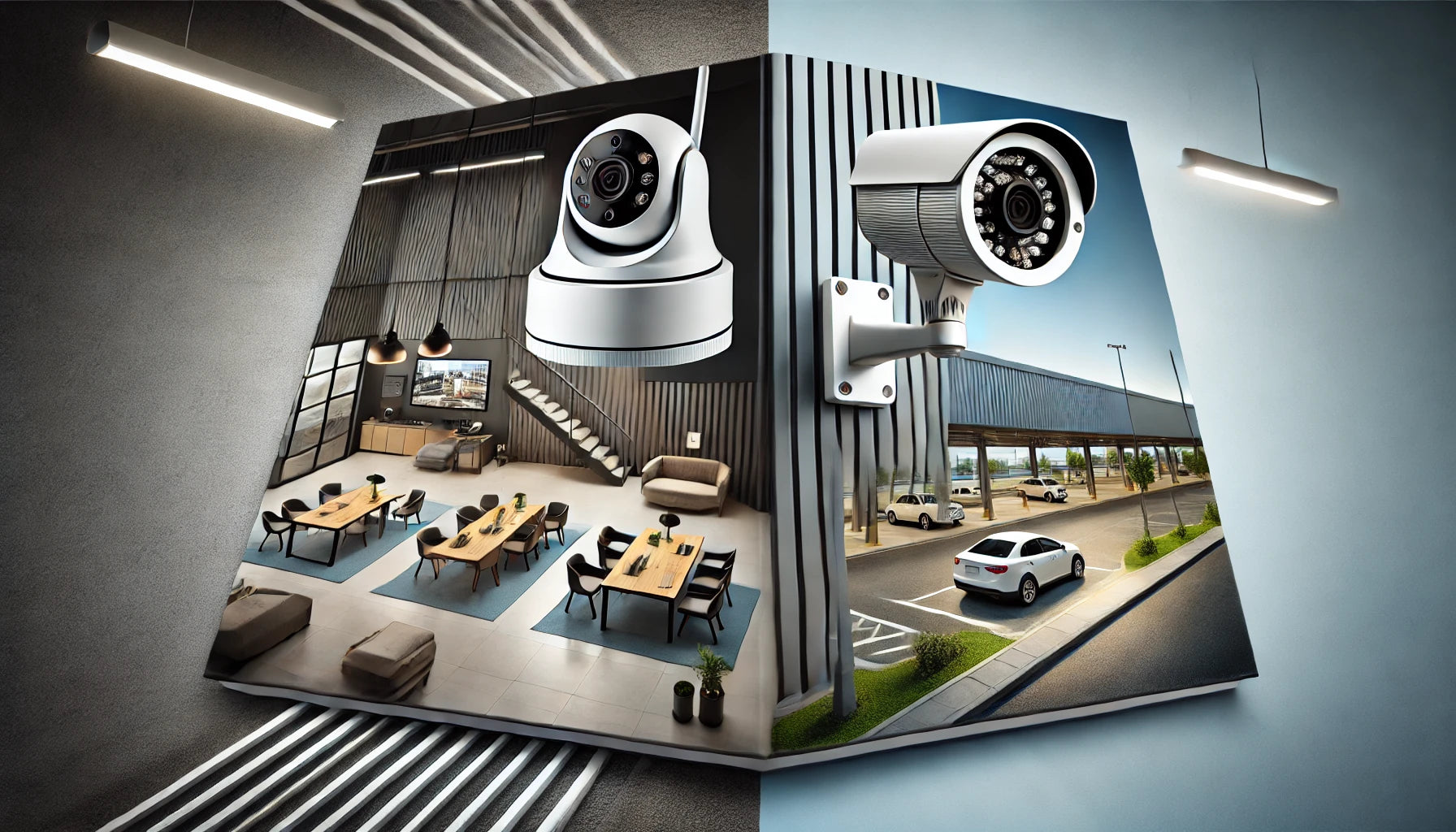When it comes to securing your home or business, selecting the right type of security camera is essential. One common dilemma faced by customers is choosing between turret cameras and bullet cameras. Both camera types offer distinct advantages, but their suitability depends on your specific security requirements. This guide will help you decide which type of camera—turret or bullet—best meets your needs based on factors like location, coverage, aesthetics, and functionality.
What are Turret Cameras?
Turret cameras are also known as eyeball cameras due to their rounded, ball-shaped design. They typically have a compact form and are mounted using a flexible joint, allowing them to be adjusted easily for precise angles.

Advantages of Turret Cameras:
- Flexible Installation: Turret cameras can be easily mounted on walls or ceilings and offer more versatile viewing angles.
- No IR Glare Issues: Thanks to their design, turret cameras are less prone to infrared (IR) glare, making them ideal for low-light and night vision applications. Their IR light is separated from the lens, which reduces the risk of image distortion caused by light bouncing off dust or water droplets.
- Discreet Design: Their smaller, more compact form is less obtrusive than other camera types, making them less noticeable and more aesthetically pleasing, especially in residential settings.
- Indoor and Outdoor Use: Turret cameras are versatile and can be used in various settings, both indoors and outdoors, depending on the IP rating.
When Should You Choose a Turret Camera?
- Indoor Surveillance: If you need a security solution that blends well with interior spaces like offices, hallways, or living rooms, turret cameras are a good choice due to their sleek appearance.
- Areas with Glare Issues: For outdoor settings where light reflections or dust may cause glare, turret cameras provide clear images without distortion.
- Smaller Areas or Corners: The flexible mounting makes them perfect for covering smaller spaces or areas where wider field adjustments are needed.
What are Bullet Cameras?
Bullet cameras, as the name suggests, have a long cylindrical shape resembling a bullet. These cameras are often used in more exposed outdoor settings because of their larger build and weather-resistant casings.

Advantages of Bullet Cameras:
- Highly Visible Deterrent: Due to their prominent size and noticeable presence, bullet cameras act as a strong visual deterrent to potential criminals.
- Longer Range: Bullet cameras typically offer higher zoom capabilities and are suited for monitoring larger areas like parking lots, long corridors, or backyards. Their fixed viewing angle allows for precise monitoring of specific zones.
- Better Weatherproofing: Bullet cameras are usually more robust and come with higher Ingress Protection (IP) ratings, which makes them better suited to withstand harsh outdoor environments, including rain, dust, and extreme temperatures.
- Easier Cable Management: The long body of a bullet camera can house additional wiring, making cable management and installation more convenient, especially in exterior applications.
When Should You Choose a Bullet Camera?
- Outdoor Monitoring: If your primary concern is securing large outdoor spaces such as driveways, gardens, or parking lots, bullet cameras are an excellent choice due to their extended range and higher durability.
- Crime Deterrence: Their larger and more noticeable design makes them effective at deterring theft or vandalism. Criminals are less likely to approach areas visibly covered by these cameras.
- Specialized Monitoring: If you need a camera to focus on a specific spot (like an entrance or perimeter), bullet cameras are ideal, as their fixed lens provides stable, long-range monitoring.
Comparing Turret vs. Bullet Cameras
| Feature | Turret Camera | Bullet Camera |
|---|---|---|
| Size and Appearance | Compact and discreet; blends well in various settings | Larger, more prominent; visible deterrent |
| Best Use Case | Indoor, smaller areas, and low-light environments | Outdoor, long-range monitoring, and specific zones |
| IR Glare Resistance | Minimal to no IR glare | Slight risk of IR glare in dusty or foggy conditions |
| Weatherproofing | Depends on model (choose higher IP rating for outdoor) | Typically better weatherproofing with higher IP ratings |
| Flexibility | Adjustable for various angles and positions | Fixed lens for monitoring specific areas |
| Visual Deterrence | Low-profile, less noticeable | High-profile, more intimidating presence |
Which One is Right for You?
The decision between turret and bullet cameras comes down to your unique security needs.
-
If you're looking for a versatile camera that works well in both indoor and outdoor environments without worrying about glare, a turret camera may be the better option. Their discreet look makes them ideal for home use, and they perform exceptionally well in areas with challenging lighting conditions.
-
However, if you need a visible deterrent for outdoor monitoring, especially for large areas, a bullet camera is the way to go. Its larger size and long-range capabilities make it highly effective for perimeter security.
Conclusion
At CCTV Importers, we offer both turret and bullet cameras that meet the highest Australian standards. Whether you need discreet indoor surveillance or robust outdoor monitoring, our range of cameras will provide the ideal solution for your specific security requirements. Check out our full range of turret and bullet cameras at cctvimporters.com.au, or contact our expert team for personalized recommendations.
Feel free to reach out to us for assistance in choosing the perfect camera for your property. Your security is our priority!









